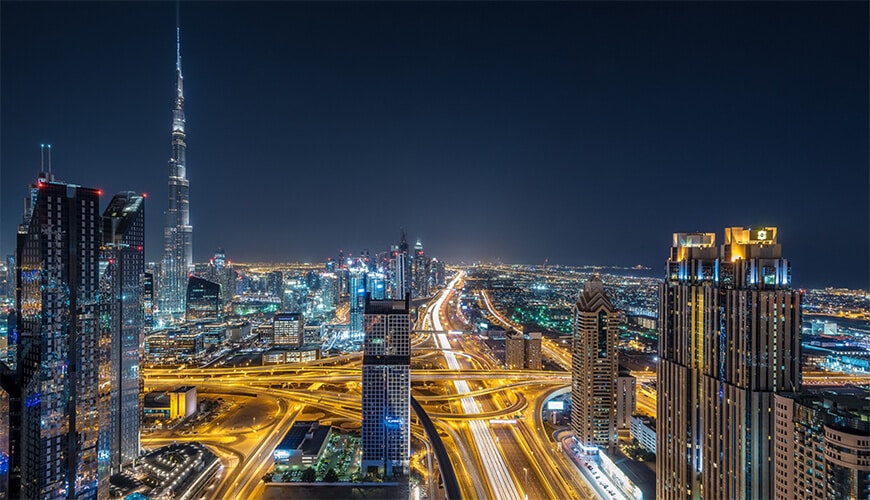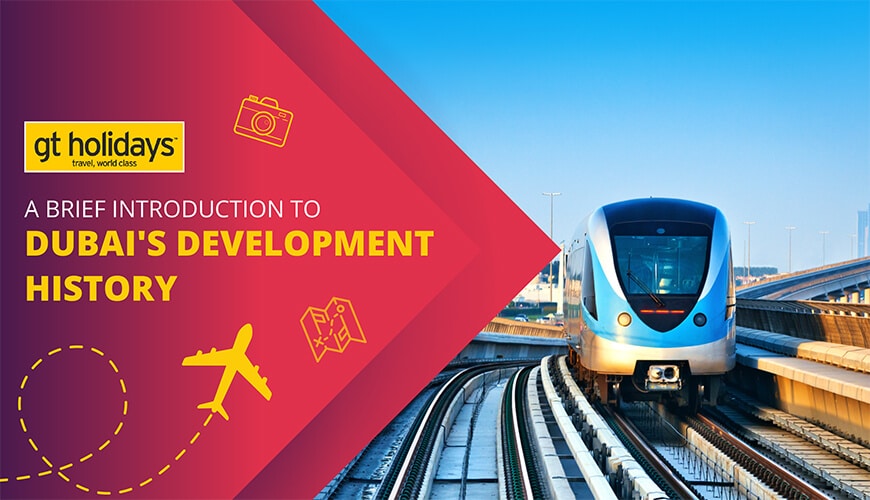You may know Dubai as a central business hub in the Middle East with famous landmarks. The metropolis of today was once a humble settlement and has undergone a drastic change to become a global attraction.
Read on to find out about Dubai’s development history that will help you compare the difference between the old versus the new and provide insight into how the city developed over time. Here’s a peek into the brief history of Dubai.
Before 18th Century
You will find the earliest traces of Dubai settlements dating back to the Bronze age or 3000BC. The 5th to 7th centuries AD saw Dubai transform into a famous trade route based on pearling, fishing and boat building. One of the local tribes of Dubai, the Bani Yas Tribe, turned the natural harbour of Dubai into a centre of fishing and pearling. Soon they were joined by the Middle Eastern Arabian nomads called Bedouins, who settled near the creek in tiny houses known as Barastis. Later the different tribes got into riots over the political scuffle over the position and sentiments of their respective tribe.
Eventually, the leader of the Bani Yas tribe, Maktoum Bin Butti, migrated to the Shindagha Peninsula, which is today’s Abu Dhabi, along with a few of his tribesmen, creating a significant impact on the history of Dubai city. Maktoum Bin Butti’s dynasty still holds power and rules over all of Dubai, with Abu Dhabi being the capital of the United Arab Emirates.
On the other hand, in their search to expand their reach, the British bonded with the local rulers and found success in creating maritime truces with the Sheikhs. The trade route you know today as Iraq connected Dubai to Oman and received significant business from European and Portuguese traders. The port saw Dubai’s developmental history through slow but steady economic growth due to its vast stock of pearls and soon turned into a principal port on the gulf coast.

After 18th Century
Dubai pearls kept attracting people all around the globe, leading to a significant boom in its economy during the early 1900s. 1902 saw a major influx of Arab settlers and Iranian traders, followed by the introduction of tariffs at the Lingeh port of Iran, thus further enabling the trade in Dubai to flourish.
Furthermore, oil was discovered in and around Dubai during the 1950s to1960’s, allowing Dubai to benefit immensely from this new avenue. Dubai’s global reach and communication propelled the revenues generated from its trade and oil explorations. When the revenues from oil reserves started pouring in, Dubai saw a rapid jump in its development. Dubai’s ancient city saw a significant uplift in infrastructure, especially in schools and hospitals, from 1969 onwards. The following years saw Dubai transform into the glamorous hub of today.
Advancements in the 21st Century
Sheikh Mohammed Bin Rashid Al Maktoum, the ruler, enabled Dubai’s cultural, social and economic growth and advancement. Check out the critical milestones in the history of Dubai’s development that raised Dubai to the top during the Sheikh’s regime.
1971: Revamping Dubai International Airport with an asphalt runway and adding the fire station at the premises.
1979: Opening the port of Jebel Ali to ease travel to and from Dubai. The port helped in attracting overseas investment and allowed trade to grow at an exponential rate.
1985: Emirates Airlines got launched.
1996: Dubai hosted the World Cup in Horse race for the first time, along with its first-ever Shopping Festival.
1999: The very famous and world’s only 7-star hotel, Burj Al-Arab, was inaugurated.
2002: Sheikh Mohammed proposed the creation of a ‘New Dubai’ by launching the Internet.
2003: The beginning of several ambitious projects, one of which was creating the world’s tallest tower, the Burj Khalifa.
2010: Completing the construction of the Burj Khalifa to create the tallest artificial structure on earth.
Modern Dubai
Dubai has since then seen a significant expansion in its infrastructure.
- A primary highway, the Sheikh Zayed Road, linking Dubai and Abu Dhabi, is the longest road in the Emirates. The major route now connects various important buildings and areas of Dubai, including the Emirates Towers, Palm and Dubai Marina. You can visit all the popular regions through our Dubai tour packages.
- Dubai Marina, an artificial canal city located on a 3 km stretch of the Persian Gulf shoreline, was constructed by bringing in water from the gulf and has assisted in shaping the history of Dubai city. Today’s most extensive manufactured waterfront, the Dubai Marina, houses various iconic structures like the Jumeirah Beach Residence and Masjid Al Rahim Mosque.
- The Dubai Creek, which initiated the first-ever settlements in the region, is a significant part of Dubai’s developmental history, which also gave rise to the Al Maktoum dynasty in the city. The creek separates the town into 2 sections, the Deira and Bur Dubai. Take a romantic Dhow boat dinner cruise on the Dubai creek with our Dubai honeymoon packages and enjoy sailing over historic waters.
- The impressive and famous Clock tower of Dubai, built in 1963, still connects Bur Dubai and Deira. The tower’s transformation from a sand and undeveloped structure to one of the popular hangout spots for youngsters offers you a glimpse into Dubai’s tourism history.
From Bedouin settlements to glittering skyscrapers, Dubai is one of those few cities that has displayed rapid development. Visit Dubai through our Dubai travel packages and explore Dubai’s developmental history with GT Holidays. Follow our Instagram profile to know about the latest offers and discounts.


Comment (0)